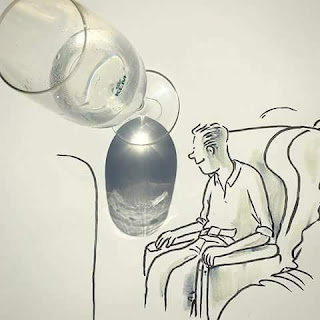Wednesday, June 26, 2019
The Nature of Dreaming
Innovating from the Freudian techniques of dream-study, the Surrealists fully realized and utilized the nature of dreaming. Obsessed with trance-states, the surrealists operated by shuttering the normal preceptory inputs of art, painting from no models and in no rational or learned state. This allowed their artistic processes and thoughts to operate freely in the Ganzfeld-Space (named for the infamous effect) of closed eyes, of a mind closed to think within itself, just as the mind does in sleep. This closing creates a closed space, temporally and spatially, that can be seen in the titles of many surrealist works, which take on proper nouns or definitive ideas with little relation to the painting itself, the thought or idea mutated in the realm of pure thought. In doing so, not only was the nature of dreams uncovered and explored (as pure, abstraction and thought), but recognized for its full potential, as a space for productive thought to occur, operating in pure philosophical abstraction.
The recognition of this as spatial (Ganzfeld Space) is shown in thought-narratives since - the 1960s LSD narratives emphasize setting and scenario, the entire ritual of the drug enveloping and containing the trip. Similarly, Yume Nikki and its spinoffs all take place in a similarly confined space in which the portal exists where the world of thought can then be entered. In doing so, a space can be constructed with which to deal with thought more directly than typical.
Within this space firmly established, thought is then directed. Thought is not an abstract entity capable of operating in isolation but a force which must be granted channels to move through. This function is fulfilled by what informs the boundaries of Ganzfeld Space, the discourse that is the space. In dreams and hallucinations, it’s the memory, generating from the past various linguistic paths down which to flow. Elsewhere this function is explicitly performed by various open ended texts, such as the Tarot, Zodiac, or Bible, a type of discourse fully explored in The Thousand and One Nights, with the stories being pitched as a method of reform, the language being a method by which to lead thought.
The text produced then produces a question of its makeup - the discourse’s text-production forms a text alongside the text produced from the discourse (the interpretation). There is no end to this question. This is an endless spiral of text-formation, beginning from the original source, with the Ganzfeld-Space able to create infinitely many texts. It is through this that Ganzfeld Space, such as in dreams or open-texts such as Tarot or the Bible hold value - not as a text in itself, but as a discourse, with which to generate texts from.
Subscribe to:
Post Comments (Atom)

No comments:
Post a Comment